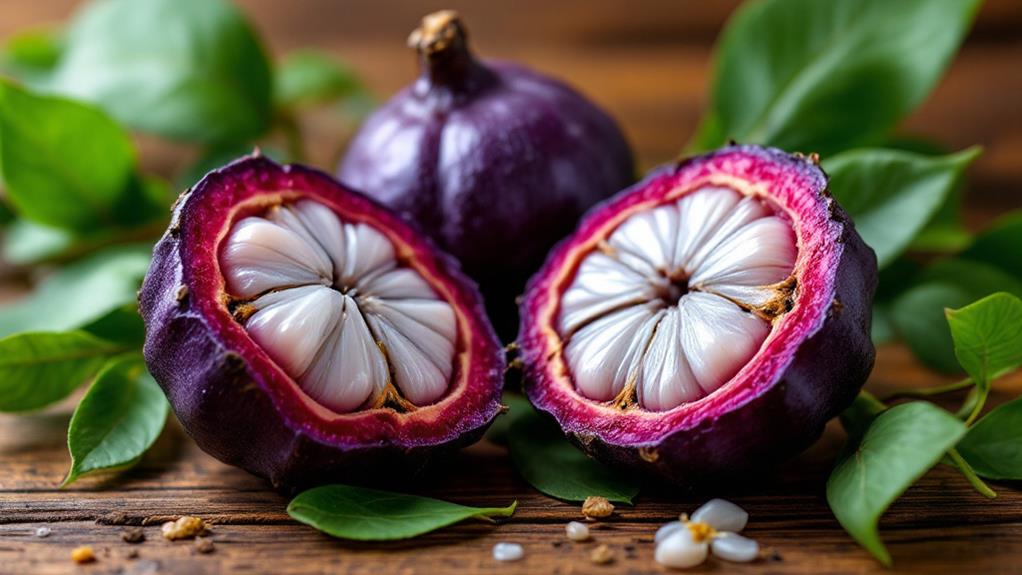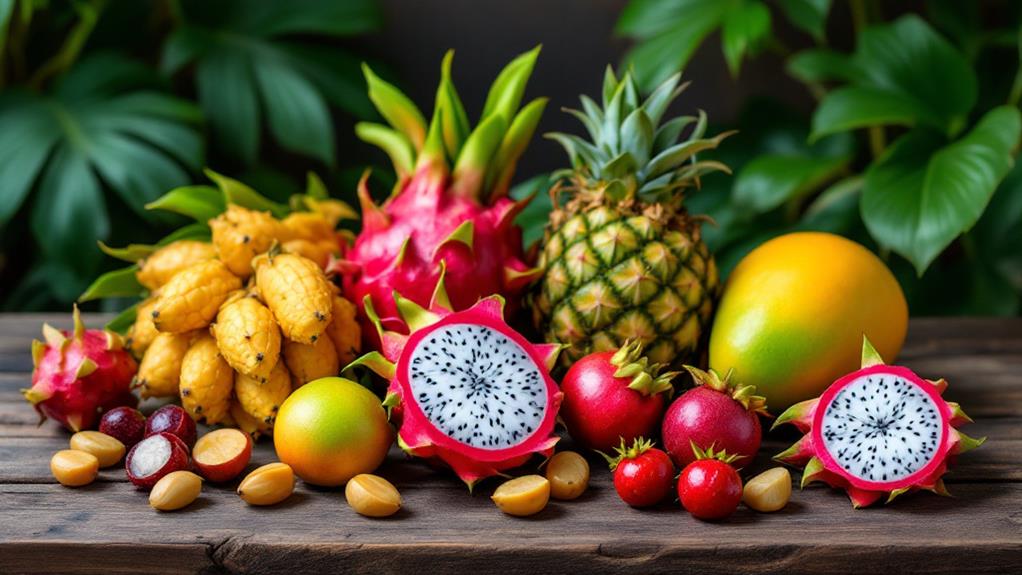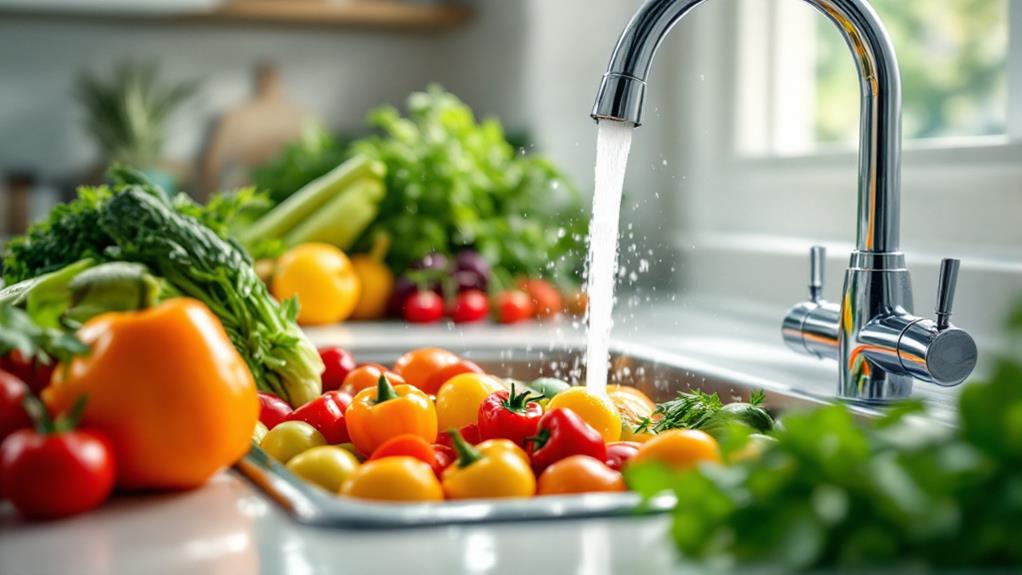How to Consume Fruits and Veggies More Easily: Tips and Tricks
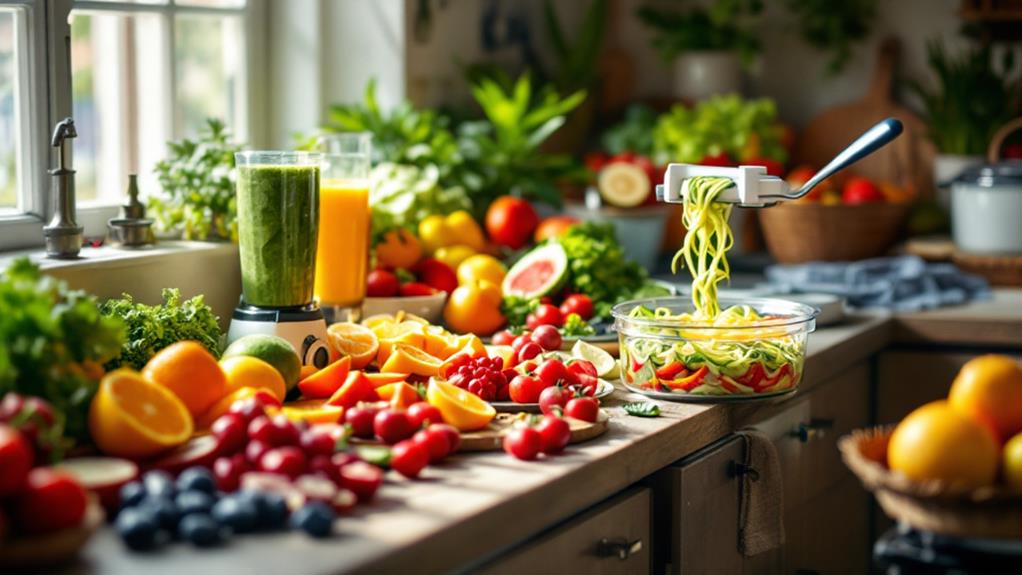
You can easily increase your fruit and veggie intake by incorporating them into your meals creatively. Start by adding sliced bananas or dried cranberries to your morning cereal. Toss fresh fruit into yogurt for a delicious breakfast. At lunch and dinner, improve salads with chopped veggies and sneak spinach or zucchini into pasta sauces. Keep frozen veggies on hand for quick stir-fries. Snacking? Prepare raw veggies with hummus or make fruit smoothies. Try grilling for extra flavor or visit farmers' markets for fresh produce. By making these small tweaks, you'll find more enjoyable ways to consume your fruits and veggies.
Boosting Breakfast With Produce
Kick off your day by enhancing your breakfast with a variety of fruits and veggies. Start by eating more fruit with your whole-grain cereal. A simple way is to add sliced bananas or dried cranberries, meeting your daily fruit and vegetable goals while adding natural sweetness. Fresh fruit, like berries or sliced cherries, can transform plain yogurt or cottage cheese into a protein-rich, antioxidant-packed delight. This approach aids you in aligning with dietary guidelines that recommend two cups of fruit daily.
Incorporating fresh fruit into your morning routine is easy and beneficial. Stir chopped peaches or pears into your oatmeal for a delicious, nutritious start. It's a great way to guarantee you're consuming enough fiber and nutrients. Remember, it's better to eat whole fruits over juices, as they promote better digestion and general health.
Boost your vegetable intake by including chopped vegetables in your scrambled eggs or omelets. This not only adds flavor but also nutrition to your savory breakfast. By integrating vegetables and fruit into your morning meal, you're setting a positive tone for the rest of the day and making strides toward a healthier lifestyle.
Lunch and Dinner Enhancements
After improving your breakfast with fruits and vegetables, it's time to focus on lunch and dinner. Incorporating more fruit and vegetables into these meals contributes to healthy eating, ensuring you get vital vitamins and minerals. Aim to make half your plate filled with nutritious produce. Here's how you can easily elevate your meals:
- Salad Mix-ins: Add a variety of chopped vegetables like bell peppers, cucumbers, and tomatoes to your salads. This not only improves flavor but also increases your nutrient intake. People who eat a colorful array of vegetables typically meet their daily Serving Sizes for key nutrients.
- Sneaky Additions: Increase fiber and nutrients by adding spinach, kale, or zucchini to pasta sauces and rice dishes. These veggies blend well, maintaining your dish's delicious flavor profile.
- Frozen Vegetables: Keep frozen vegetables on hand for quick meal prep. Toss them into stir-fries or casseroles to save time without sacrificing nutrition. They're a convenient option for busy nights.
- Roasted and Grilled Sides: Experiment with grilled or roasted vegetables like sweet potatoes and asparagus. They're tasty side dishes that help you increase your vegetable servings effortlessly.
Smart Snacking Strategies
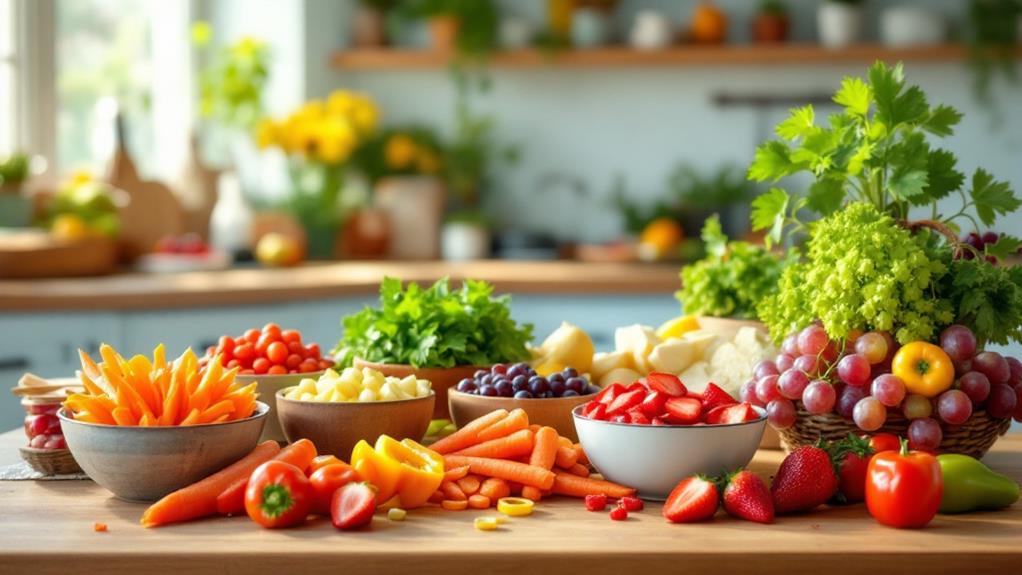
Snacking can be a key player in maintaining a healthy diet, especially when you choose wisely. Incorporating enough fruit and vegetables into your snacking routine can greatly impact your general health and help reduce the risk of heart disease. Start by preparing easy-to-grab options like pre-chopped raw veggies such as bell peppers and carrots. Store them in visible, convenient containers to encourage daily consumption.
Snack bags are another smart strategy. Fill them with a mix of dried fruit and nuts to create a delicious blend of fiber and healthy fats, ensuring that you're energized throughout your day. Grab-and-go fruits like grapes and bananas should always be at arm's reach. They're perfect for satisfying that snack craving without derailing your healthy eating plan.
Frozen fruits, like berries, can be blended into smoothies for a rejuvenating treat that satisfies your sweet tooth without added sugars. For a savory option, pair raw veggies with healthy dips such as hummus or yogurt-based dressings. These improvements make them more appealing and flavorful. By strategically incorporating these snack options, you'll make it easier to eat more fruits and vegetables, supporting a healthier lifestyle.
Creative Cooking Techniques
In relation to making fruits and vegetables more enticing, creative cooking techniques can make all the difference. By trying out new methods, you can transform ordinary produce into delicious, inclusive dishes that everyone will love. Here are some inventive ways to improve your meals:
- Grilling or Roasting: These techniques can bring out the natural sweetness and flavor in vegetables. Try grilling peppers or roasting sweet potatoes to add a tasty twist to your meals.
- Spiralizing: Create nutritious "noodles" from vegetables like zucchini or carrots. This method offers a fun, low-carb alternative to traditional pasta, making it perfect for a creative, healthy dish.
- Blending: Add vegetables to sauces to increase their nutritional value without altering the taste considerably. For instance, blending spinach or carrots into tomato sauce is a seamless way to incorporate more veggies into your diet.
- Experimenting: Don't hesitate to try different cooking methods like steaming, microwaving, or sautéing. These techniques can reveal new textures and tastes, making fruits and vegetables more enjoyable.
Incorporating fruits into savory dishes, like pineapple in stir-fries or apples in salads, can also introduce a revitalizing contrast of flavors.
Seasonal and Budget-Friendly Tips

During the changing seasons, focusing on seasonal and budget-friendly produce can greatly improve your meals without breaking the bank. Start by purchasing seasonal fruits and vegetables, which are fresher, more flavorful, and typically more affordable than out-of-season options. Visit local farmers' markets to investigate unique produce while supporting local agriculture and finding great deals. By incorporating these finds into your meals, you'll enjoy variety and improved nutritional value.
Meal planning plays a vital role in maximizing the benefits of seasonal availability. Design your weekly menus around what's in season to guarantee your diet includes at least five types of vegetables and two fruits daily. This approach not only keeps your meals interesting but also makes sure you're getting the most nutritional bang for your buck.
Don't forget to create a shopping list that prioritizes seasonal produce and current sales. This helps you stay on budget and guarantees you have enough fruits and veggies to meet your daily intake. For an extra budget-friendly tip, consider frozen fruits and vegetables, which retain their nutritional value and have a longer shelf life. With these strategies, consuming fruits and veggies becomes both easy and economical.

